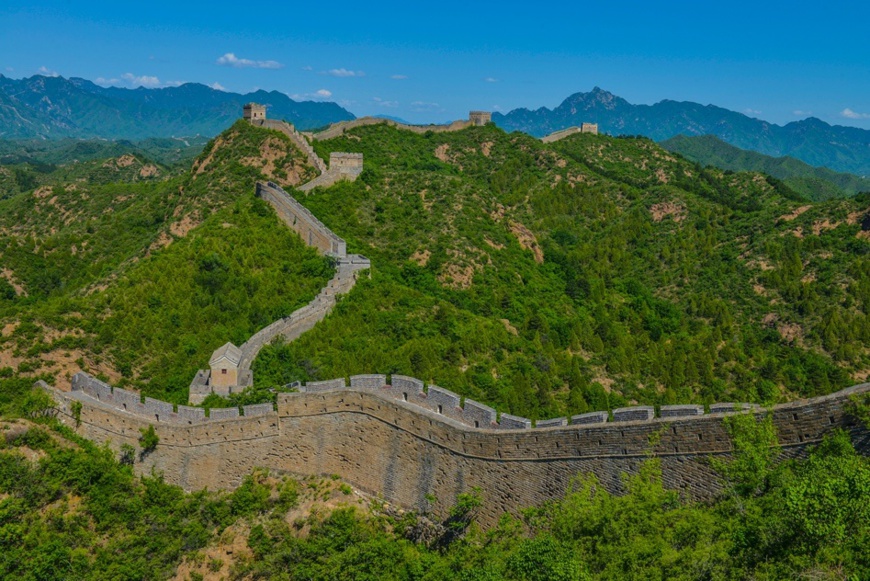Electronic inspection system put into operation on Great Wall of China
By Shi Fang, Bi Mengying, People’s Daily
Emergency and abnormality detection for the Great Wall, located in mountainous areas, has long been a tricky issue, but now an electronic inspection system is changing history.
Beijing’s Huairou District, home to sections of the Great Wall, recently equipped each of its 131 conservators with an electronic device that reports their locations every two minutes. With the device, the conservators can also report problems they spot by sending photos to relevant departments of cultural relics.
The system proved its value soon after its debut. On June 2, it added a new piece of cultural relic – a pedestal – to the collection of the Huairou Museum.
The pedestal was spotted by conservator Li Binglong in the bushes near the Great Wall when he was on patrol. He soon took a photo and reported his finding to relevant authorities, as instructed during the training.
“This machine came in very handy. Li and I immediately uploaded a photo of the pedestal when we found it. Soon we received a call from the head of Huairou’s cultural heritage authority, and the pedestal was sent to the Huairou Museum,” said Li Linyuan, a Great Wall conservator in Huairou’s Yanxi township.
Shen Wei, one of the developers of the system, introduced that the location and patrol route of every conservator on duty in Huairou district is shown by the system in real time on a big screen of the command center. With the system, each township in the district can have a grasp of the conservators’ work and receive the information they transmit.
“It was very hard to find scribbling, damages to the walls or injured hikers in the past as we always spent a huge amount of time negotiating with conservators over the locations. Sometimes we couldn’t find these locations without the conservators leading the way,” said Guo Dapeng, deputy director of Huairou Cultural Commission. “Thanks to this system, we can now get to the accurate location very quickly,” he said.
“The system also protects the conservators, as it enables us to know exactly where they are if an accident happens during the patrol in the perilous mountains,” Guo added.
Besides, the system also serves as a real-time messenger for conservators in the same town. “We can inform our colleagues instantly when off-route tourists head to other directions,” said Wang Guijiang, a conservator of Dazhenyu village, Bohai township.
Equipped with this new instrument, conservators now patrol in key areas on a regular basis, and the photos they upload will form a data base that helps future Great Wall reservation.
“If I find a crack in the wall, I can take a picture of it every day to keep track of it, see if it’s getting bigger,” said Wang.
More functions of the system are to be expected in the future, such as alarming and video calls, which helps the conservators to handle emergencies such as forest fires and floods together with other departments.













